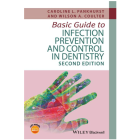Infection Prevention in Dentistry
Infection Prevention in Dentistry Controlling infection is one of the major concerns in any dental health unit. The control practice varies in each facility. From the materials and equipment used, the handling process and the dental procedures done must be prevented from the spreading of infection.
Patient care strategies play a vital role since dentist handle patients who will undergo dental procedures and minor operations. Preventing any pathogen transmission must be taken into consideration by each dental personnel so that their patients will trust them all the way. There are strategies to take in order to achieve the goal to remain infection-free. Those strategies include: the basic hand washing technique whether its surgical or non-surgical technique, hypersensitivity of the patient to the anaesthesia or medications used, sterilization of the dental instruments used, using of clean and sterile water for flushing and irrigation, aseptic technique for parenteral solutions and sterile oral surgical procedures. Having a good personal hygiene protects the patient and the dental employees from contracting infection from every contact they would encounter. In connection with the hands are the nails. Nails should be well-trimmed and no artificial nails should be in use since it can also be a carrier for infection. Wearing of surgical mask and hairnet must also be a practice in every dental facility so that falling hair and saliva will not be in contact with patients. Wearing of dangling jewellery should also be prohibited so that it cannot create disturbance while dental procedures are going on. Bringing of foods inside the dental clinic must not also be prevented since outside foods can bring germs and bacteria unless the dental clinic has a visitor’s lobby or patient’s companion waiting area.
Another way of preventing infection is the application of hand sanitizers or alcohol in the dental facility for easy access of patients and dental staffs. Proper clothing or uniform must also be implemented so that it cannot create confusion to the patients as to who the dental staffs are. Once a month, dental clinics must conduct disinfection to their facility to aseptically clean the area and to prevent and preserve the integrity and reputation of the office. The owner or the management must also be vigilant enough to let her dental staff have their immunizations so that they can protect themselves against infection. Thorough assessment of each visiting patient must be practiced by the secretary to further assess the condition of the patient. It should not be just his or her dental condition but the whole general health condition. In this way, you can identify and know what the best thing to do for the patient is. Dental chairs should also be in a good condition and clean after every patient use. Similarly the instruments used for one patient should not be reused before sterilization or disinfection. Before another patient can use it, it must be a cleaned first and then autoclaved. So these are the basic things you need to remember in preventing infection in dentistry. Every facility has its own unique ways and procedures in preventing the spread of infection.


